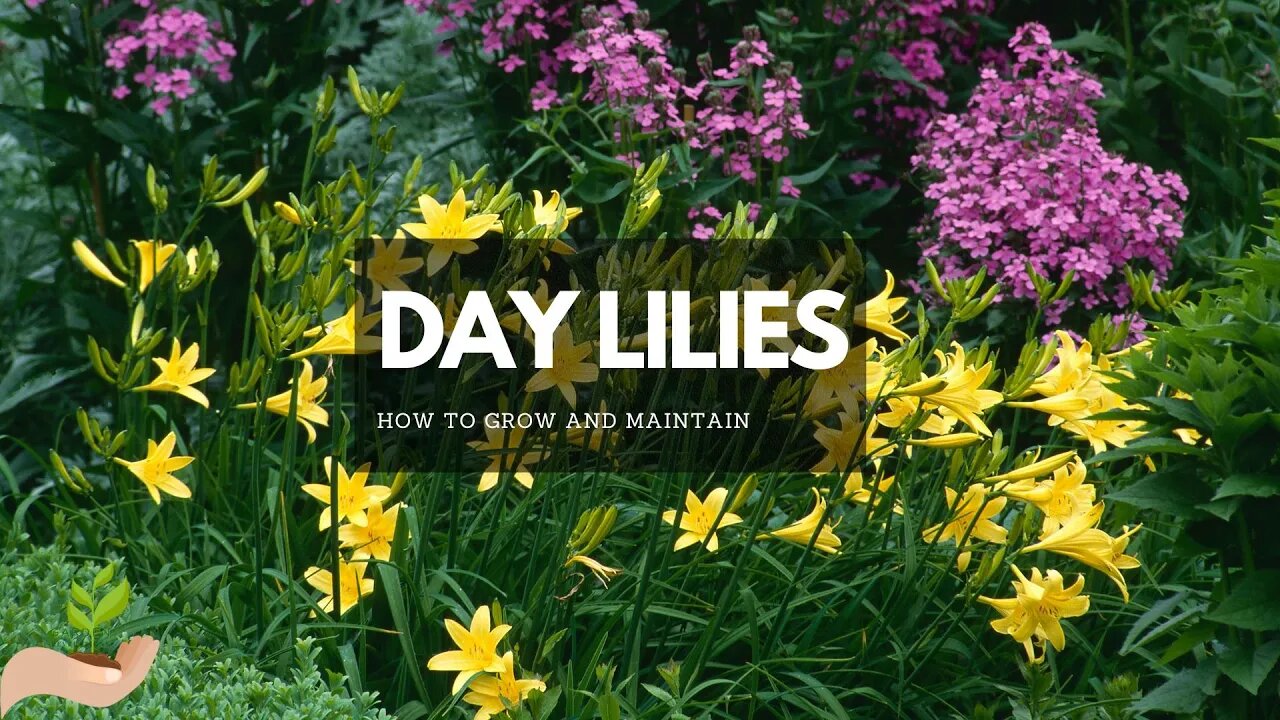Premium Only Content

DAYLILIES: A Beautiful, Low-Maintenance Garden Perennial (so many day lilies to choose from!)
Daylilies are popular among gardeners for their stunning blooms, low-maintenance requirements, and adaptability to various growing conditions. These perennials offer an impressive display of color and texture that can brighten up any garden. This content will delve into the fascinating world of daylilies, discussing their appearance, growing zones, planting, care, and maintenance.
Colors and Appearance.
Daylilies, belonging to the Hemerocallis genus, are available in various colors, including shades of yellow, orange, red, pink, purple, and even near-white. These trumpet-shaped flowers usually have six petals and can measure up to 6 inches, or 15 cm, in diameter. The leaves are long, slender, and arching, forming a dense, grass-like clump. The flower stems, called scapes, can grow up to 4 feet, or 1.2 meters, tall, depending on the variety.
Growing Zones and Environmental Conditions.
Daylilies are native to Asia and thrive in USDA plant hardiness zones 3 to 9. These versatile perennials can tolerate various soil types but prefer well-draining, slightly acidic soil with a pH level of 6.0 to 6.5. While they can grow in partial shade, daylilies perform best in full sun, requiring at least 6 hours of direct sunlight daily.
Latin Names.
The Hemerocallis genus contains over 80,000 registered cultivars, making it one of the most diverse flowering perennials. Some popular daylily cultivars include:
Hemerocallis 'Stella de Oro' (Stella de Oro Daylily).
Hemerocallis 'Ruby Spider' (Ruby Spider Daylily).
Hemerocallis 'Happy Returns' (Happy Returns Daylily).
Hemerocallis 'Moonlit Masquerade' (Moonlit Masquerade Daylily).
Pollinators They Attract.
Daylilies attract many pollinators, including bees, butterflies, and hummingbirds. Their nectar-rich flowers provide a valuable food source for these beneficial insects and birds.
When to Plant Daylilies.
The ideal time to plant daylilies is in the spring or early fall, allowing the plants to establish a strong root system before summer heat or winter cold.
Planting, Care, and Maintenance.
Prepare the planting site by loosening the soil to a depth of 12 to 15 inches, or 30-38 centimeters, and incorporating compost or other organic matter to improve drainage and fertility.
Space plants 18 to 24 inches. 45-60 centimeters, apart to ensure proper air circulation and room for growth.
Water newly planted daylilies regularly during the first growing season to establish a deep root system. Once established, daylilies are relatively drought-tolerant and require minimal watering.
Apply a layer of mulch around the plants to help conserve moisture, suppress weeds, and regulate soil temperature.
Daylilies are low-maintenance, but removing spent flowers and cutting back the scapes after blooming will promote a neater appearance and prevent self-seeding.
Fertilize daylilies with a balanced, slow-release fertilizer in early spring and again in mid-summer to support robust growth and flowering.
Divide mature plants every 3 to 5 years in the spring or early fall to maintain vigor and promote healthy growth.
Daylilies are a fantastic addition to any garden, offering a stunning display of color and a low-maintenance growth habit. Following the planting and care guidelines outlined above, you can create a beautiful and thriving daylily garden that will bring joy and color to your outdoor space for years to come. These versatile perennials are attractive and highly adaptable, making them an excellent choice for gardeners of all experience levels.
PURCHASE DAYLILY MIX VALUE BAG: https://amzn.to/3zLxt8B
As an Amazon Associate I earn from qualifying purchases.
Connect with us
Facebook: https://www.facebook.com/TayloesLawnCare
Web: https://www.tayloeslawncare.com
MeWe: https://mewe.com/p/diyhomegarden
Image and music licensed via Canva Pro
-
 0:57
0:57
Garden Revelations
2 years ago10 Best Evergreen Shrubs for Year-long Color and Texture
128 -
 52:13
52:13
The Quartering
2 hours agoRace War Nears, Russia Makes Huge Mistake, Fauci Bombshell & More
64.5K60 -
 LIVE
LIVE
Dr Disrespect
4 hours ago🔴LIVE - DR DISRESPECT - THE FINALS - NEW SEASON 8 LAUNCH EVENT W/ THE SHOTTY BOYS
1,498 watching -
 LIVE
LIVE
Darkhorse Podcast
3 hours agoThe 294th Evolutionary Lens with Bret Weinstein and Heather Heying
460 watching -
 11:49
11:49
Dr. Nick Zyrowski
9 days ago12 Unusual NAC ( N-Acetyl Cysteine) Questions Nobody Ever Answers
11.8K8 -
 1:03:45
1:03:45
Russell Brand
4 hours agoWW3 IMMINENT! Israel & Russia Strikes Leave World “ON THE BRINK” - SF631
109K57 -
 56:18
56:18
Tucker Carlson
2 hours agoSam Altman on God, Elon Musk and the Mysterious Death of His Former Employee
32.7K81 -
 1:12:40
1:12:40
Sean Unpaved
4 hours agoJalen Carter's 1-Game Suspension & The Pressure for Instant Greatness in Sports
32.6K2 -
 1:07:27
1:07:27
LindellTV
2 hours agoBREAKING: MICHIGAN JUDGE THROWS OUT CRIMINAL CHARGES
21K11 -
 11:34
11:34
The Kevin Trudeau Show Limitless
6 hours agoClassified File 4 | The Hidden Science of Brain Control REVEALED!
10.2K4